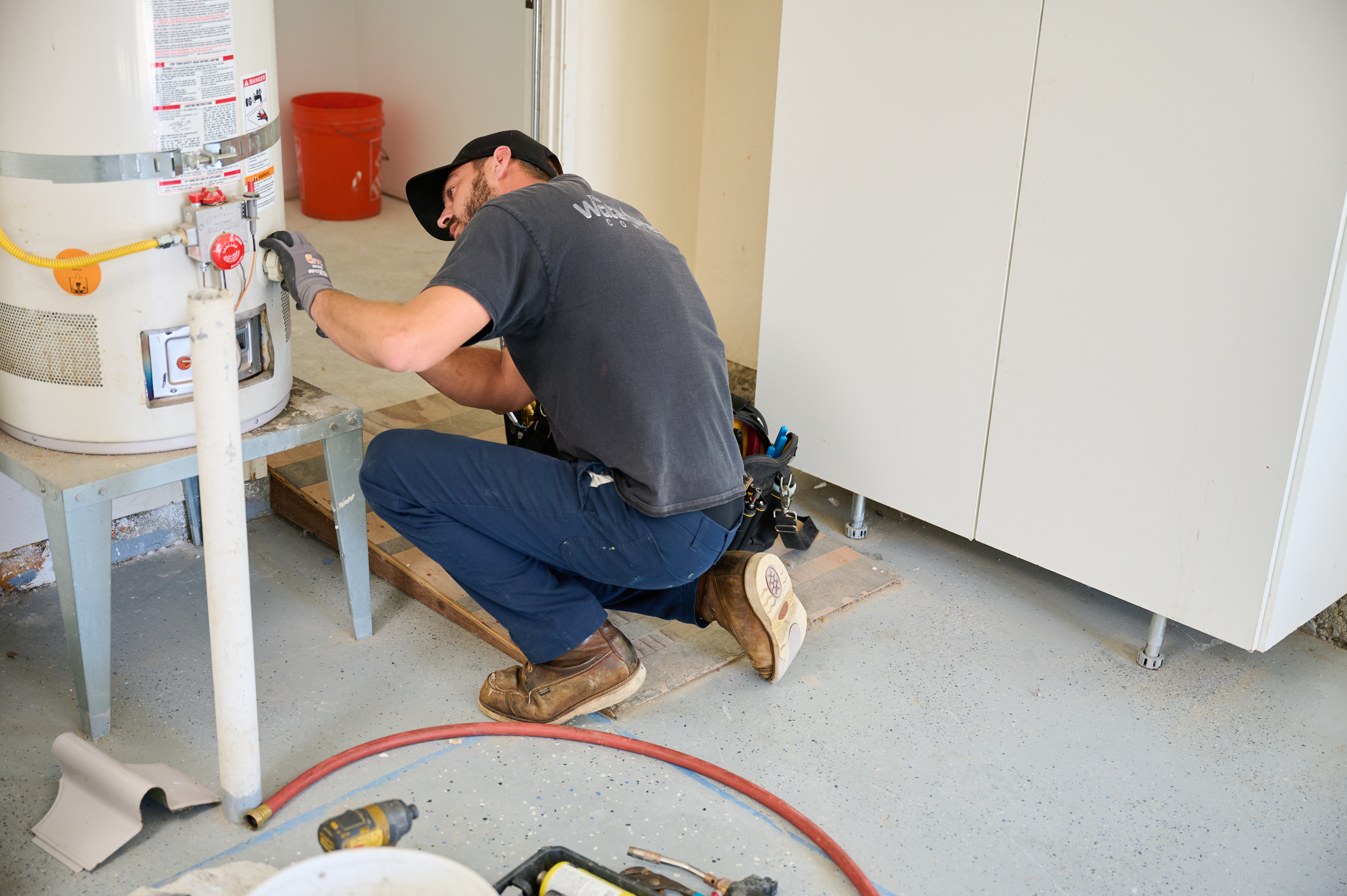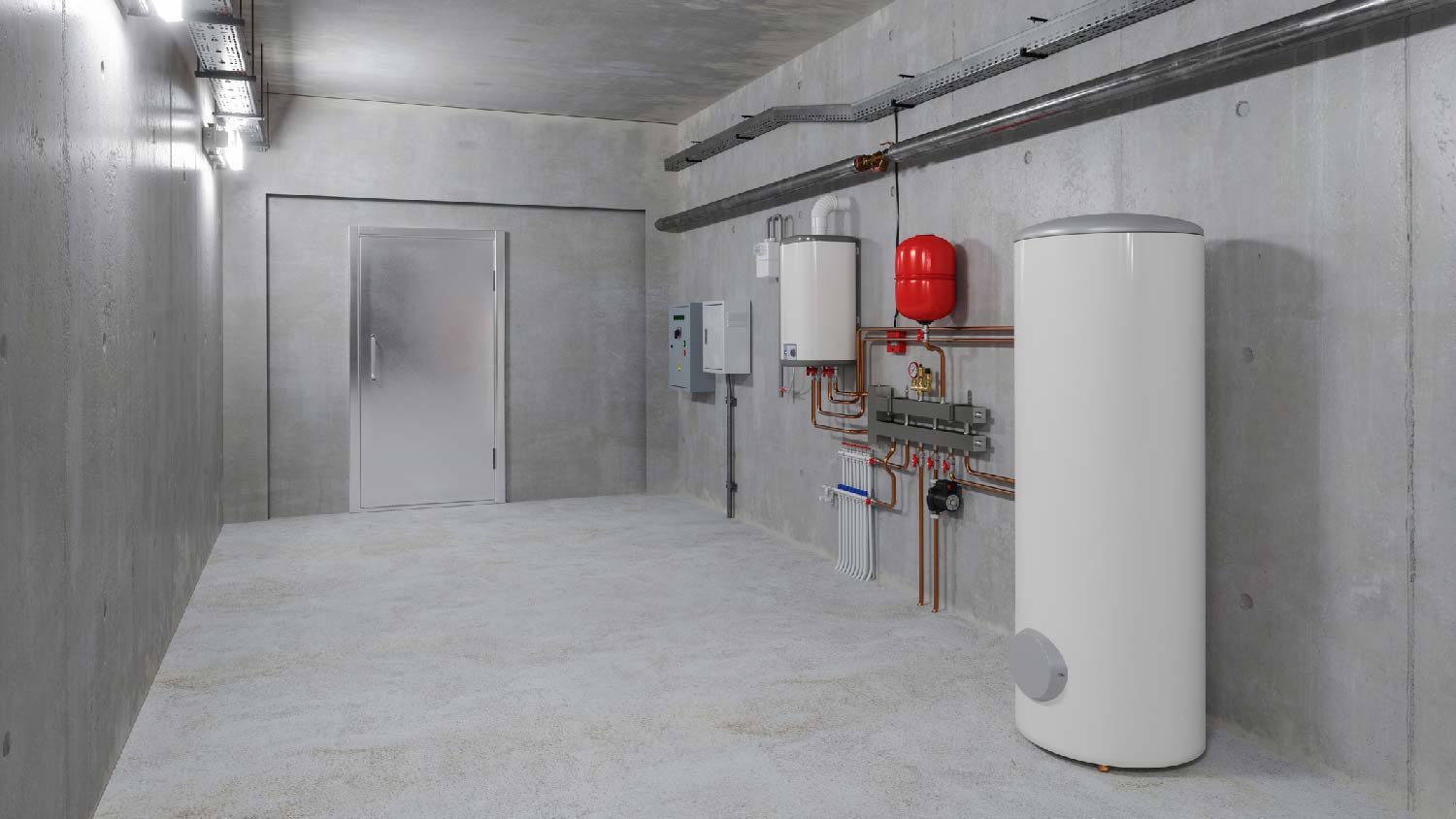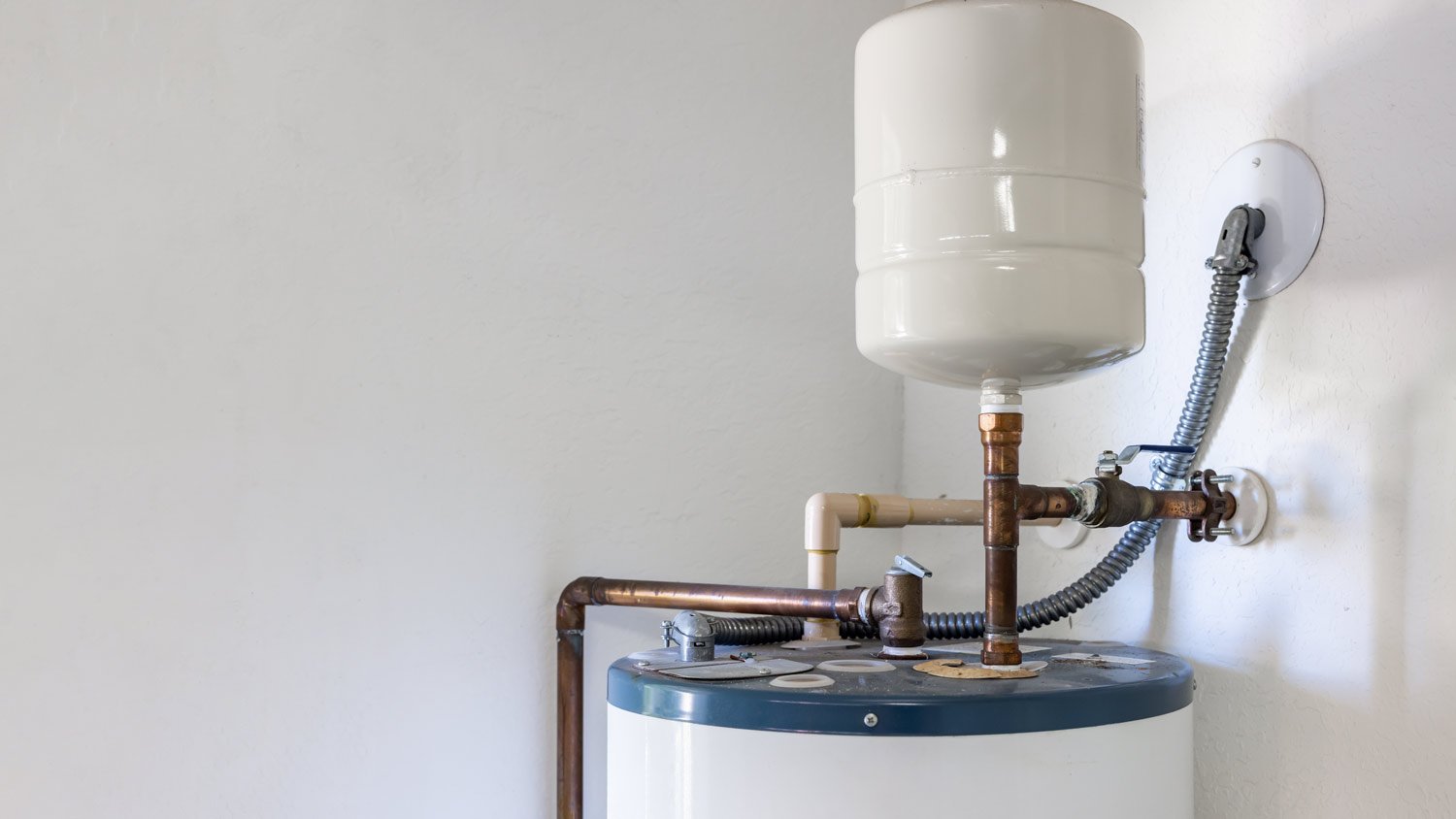
Running out of hot water too quickly or hearing strange noises when you call for hot water? Use this water heater repair cost guide to see what a fix will cost.
Say no to surprise cold showers


A tripped circuit breaker or thermostat reset button can be easily fixed to get your hot water back.
Faulty wiring, heating elements, or control boards can prevent water from heating.
While there are some simple fixes, most electric water heater issues are best handled by experts.
Dipping your hands into cold or lukewarm water when you're ready for a hot shower or need to wash your hands is nothing short of frustrating. If your electric hot water heater is not heating, you want to find a solution quickly. Here are nine reasons why this happens so you can get to the bottom of the problem.
A blown fuse happens when excessive electrical current flows through the fuse, causing it to overheat and break the connection. Power surges, old wiring, or an overloaded circuit can cause a blown fuse. When this happens, it cuts off power to the water heater, preventing it from operating and heating water.
Replace the blown fuse with a new one of the same amperage. If the fuse blows again, there may be an underlying issue, such as faulty wiring or an overloaded circuit. Contact a local electrician to figure out what's causing the issue.
The dip tube directs incoming cold water to the bottom of the tank, where it can be heated. When the dip tube is broken, cold water mixes with the hot water at the top of the tank instead of being properly heated first. This results in lukewarm or cold water coming from the taps, making it seem like the water heater isn’t working properly.
Drain the tank and install a new dip tube. You can DIY this task if you have some basic plumbing knowledge. If you're unsure at all, contact a local plumber to assist.
The control board acts as the brain of the electric water heater, managing functions like temperature regulation and power distribution. If the board malfunctions due to electrical failures, moisture exposure, or component wear, it may fail to send signals to the heating elements.
A malfunctioning control board may need to be replaced or reset. Diagnosing electrical components requires specialized knowledge, so it’s best to hire a pro to inspect and replace the board rather than DIY it.
When the electrical load exceeds safe levels, the home's circuit breaker shuts off power to prevent overheating or fire hazards. This can result from wiring issues, a faulty heating element, or an overloaded circuit.
Reset the circuit breaker by flipping it off and then back on. If it trips again, there could be a problem with the heater’s wiring or a faulty heating element. Contact a water heater technician near you to check out what's going on.

The thermostat regulates the water temperature by signaling the heating elements to turn on or off as needed. If it malfunctions, it may not detect temperature changes correctly, causing the heater to not turn on or shut off too soon.
Try adjusting the thermostat to a different temperature and see if the heater responds. If the water remains cold, the thermostat may need to be replaced. Contact a pro to to handle the repair.

The high-temperature limit switch is a safety feature designed to shut off power if the water temperature exceeds a safe level. It can trip due to a faulty thermostat, overheating, or excessive sediment buildup. Once tripped, the switch prevents the heater from operating to avoid scalding water or damage to the unit.
Press the reset button on the high-temperature limit switch, which is located on the thermostat panel. If it trips repeatedly, the thermostat may be faulty, or excessive sediment buildup may be causing it to trip, requiring a professional to inspect and fix it.
The heating element warms the water inside the tank. If it burns out, corrodes, or has electrical issues, it will no longer generate heat. The tank's water will remain cold, even if the unit appears to be functioning normally.
Turn off the heater's power, drain the tank, and install a new element. You can attempt this if you have some experience with similar tasks, but an experienced plumber or electrician can ensure it’s done safely.
The thermostat reset button is a safety mechanism that prevents overheating. If the water heater gets too hot due to thermostat failure, power surges, or a stuck heating element, the button trips and shuts down the heater.
Locate the reset button on the thermostat panel and press it to restore power to the heater. If it continues to trip, the issue may be a failing thermostat or heating element. Hire a professional to have the panel inspected.
Loose, damaged, or faulty wiring can disrupt the power supply to the water heater. Wiring issues can result from aging components, poor installation, or electrical surges. Without a stable electrical connection, the heater can’t power its components.
Loose or damaged wiring should be repaired immediately to prevent electrical hazards. Since dealing with wiring poses a risk of fire or electrocution, it’s best to have a licensed electrician inspect and fix any faulty connections.
The most obvious sign your electric hot water heater isn't heating is a lack of hot water, with only cold or lukewarm water coming out. You may notice inconsistent water temperatures, like if the water starts hot but gets cold quickly. Or, you have to wait a long time for hot water to return after use.
If your water heater has a display panel, error codes or warning lights may signal an issue. Unusual noises like clicking or buzzing could indicate an electrical problem with the heating elements or thermostat.
In most cases, calling a local water heater repair professional is the best way to fix an electric water heater that’s not heating. Issues involving electrical work like a faulty thermostat or malfunctioning heating elements are best left to the experts. If you're facing a tripped breaker or need to reset the thermostat, these are easily done DIY. You should call a pro for complex issues to ensure your safety.
Following a maintenance schedule with a local plumbing pro can prevent issues. Flushing the tank every six months removes sediment buildup that can affect heating efficiency. Pros will replace aging heating elements and check the dip tube for cracks, which maintain consistent hot water production.
Learn how to check the hot water heater for any signs of wear or damage to the wiring connections. This can prevent electrical issues that disrupt power flow. Checking that the circuit breaker and high-temperature limit switch are functioning properly can help avoid unexpected shutdowns. You should also check and adjust the thermostat to ensure it’s set at an optimal temperature for the unit.
From average costs to expert advice, get all the answers you need to get your job done.

Running out of hot water too quickly or hearing strange noises when you call for hot water? Use this water heater repair cost guide to see what a fix will cost.

Tankless water heater costs in Columbus, OH depend on the size of your water heater, location, fuel type, and more. Keep reading to calculate your expenses.

Learn all the factors that influence the cost to install a heat pump water heater at your home.

Water heater tank expansion installation diagrams can be helpful to have on hand whether you’re replacing an old unit or installing a new one.

Help your water heater work correctly and efficiently with a water heater inspection. We’ve got you covered with a checklist that you can do yourself.

If your water heater isn't heating up properly, you could have a drainage issue. These common causes of water heater not draining could be to blame.